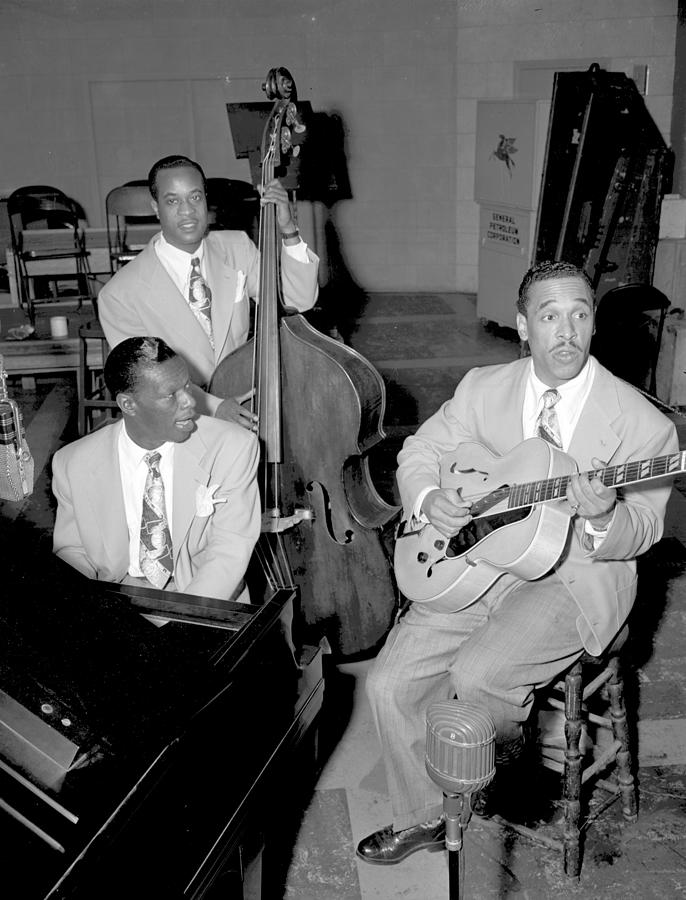I wrote a review-essay for Saturday’s Wall Street Journal book section occasioned by the publication of Straighten Up and Fly Right, Will Friedwald’s important new biography of Nat King Cole. Here’s an excerpt.
* * *

Walk into any Starbucks in America and listen to the canned music. If the first thing you hear is a standard from the ’30s or ’40s, it’s likely that the vocalist will be Frank Sinatra, Ella Fitzgerald or Nat King Cole, the three common denominators of pre-rock pop singing—and a trio of artists who have little in common beyond their posthumous ubiquity. Sinatra was a singer-actor, by turns breezy and despairing; Fitzgerald was the world’s kid sister, a bred-in-the-bone jazzer who sang with a smile on her face and in her voice. As for Cole, his warm, close-grained baritone was as persuasive on romantic ballads as it was on swing tunes. What set him apart from Sinatra and Fitzgerald, though, was the other rabbit in his musical hat: Cole was also one of the half-dozen finest pianists in the history of jazz, a peer of Earl Hines, Art Tatum, Bud Powell and Bill Evans. Even after he disbanded the King Cole Trio, his hugely successful combo, to concentrate on stand-up singing in 1951, he continued to feature his playing in small but tasty doses on record, in concert and on TV.
Cole’s switch-hitting is all but unique. Save for Louis Armstrong, he is the only major jazz musician to have been equally distinguished and influential both as a singer andas an instrumentalist. Yet his youthful career as a pianist is no longer well remembered, and he is now mostly thought of as a pop singer, one of the most famous of the 20th century. In a time when much of the U.S. was still segregated, Cole’s appeal vaulted across racial lines, though racism was always an ugly, sometimes dangerous fact of his life….
* * *
Read the whole thing here.